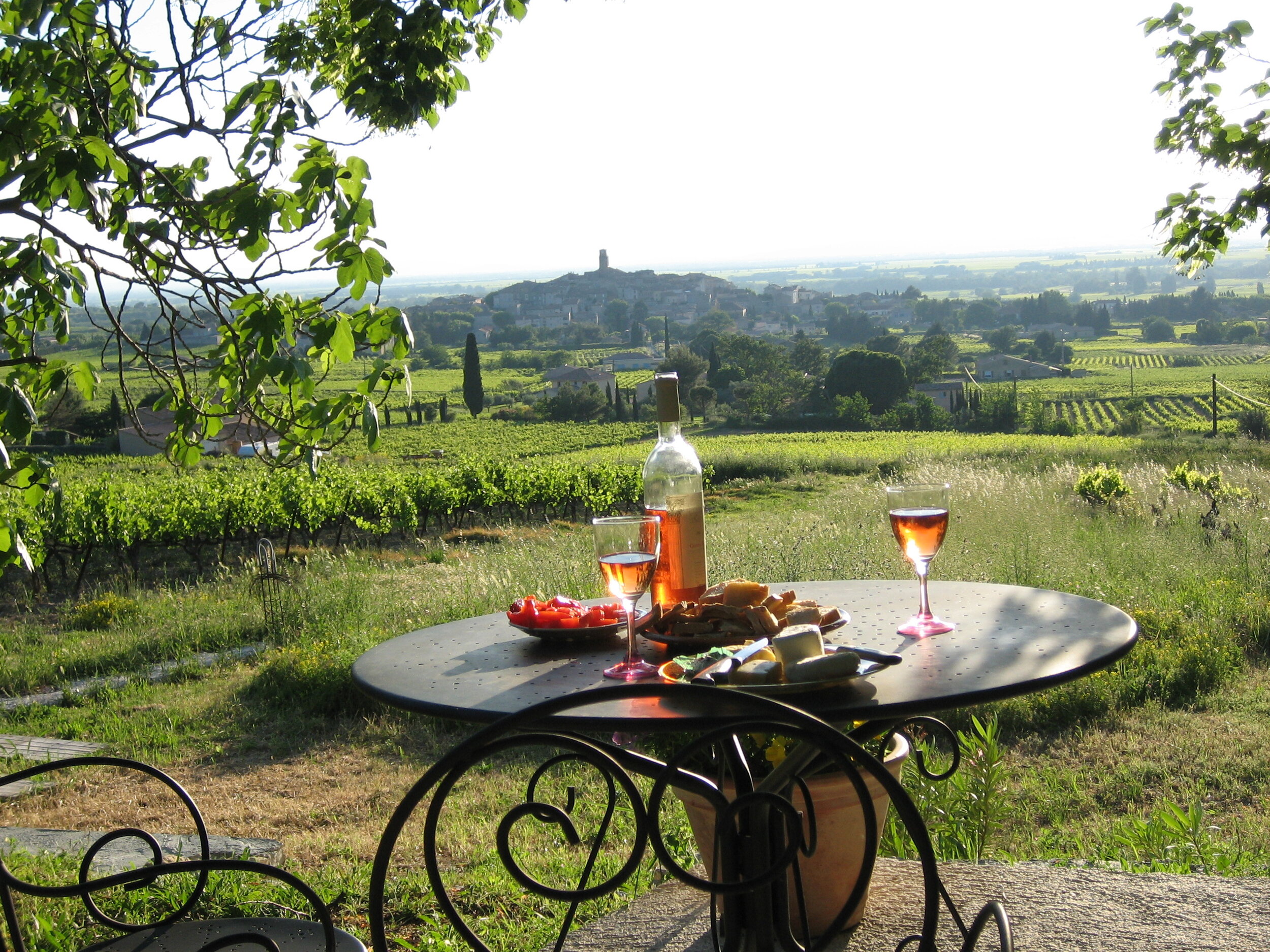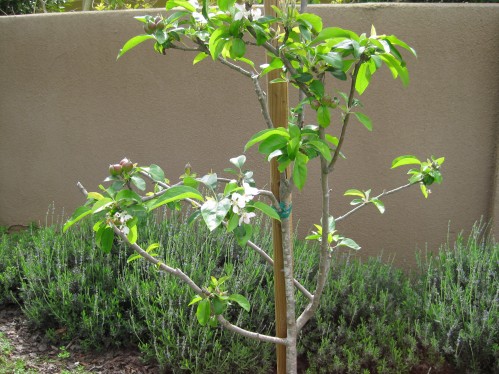Our Gite Patio Overlooking Sablet, Provence
Back in 2007, my husband and I rented a gite outside of the medieval village of Sablet in Provence, France. A gite is a small furnished vacation house in France, usually in a rural setting. I rented it online, and was drawn to the spectacular setting nestled amongst the grapevines with the stunning lower Rhône Valley before our eyes.
Once a bachelor farmer son’s small stone home upstairs, and where livestock often were conveniently sheltered on the ground floor below, this beautiful little property had been lovingly restored and transformed into a very comfortable gite. I will never forget walking into the stone home and kitchen for the first time, finding a waiting bottle of Rhône wine on the wooden kitchen table, a huge bowl of fresh ripe cherries, and a note to enjoy our stay. I was in heaven.
Since we usually travel to France in the spring, I now always associate Provence in the spring with the fabulous seasonal cherries. So sweet and delicious, perfect fresh or in a light dessert.
Cherries at Apt, Provence, Saturday Market
Experiencing fresh cherries in Provence, I wanted to grow spring cherries in our orchard, but cherries typically need a cool climate, abundant chill hours, not normally trees for Southern California. A few years ago, I found cherry trees suitable for Southern California at Green Thumb Nursery in San Marcos, a retailer for Dave Wilson Nursery.
I bought a Minnie Royal and a Royal Lee, two great Southern California cherry trees necessary to pollenize each other. For some reason, I kept losing the Royal Lee tree, twice in fact, and then once with the Minnie Royal tree. Graciously, Green Thumb Nursery replaced each tree for me. I was beginning to doubt it was possible to grow cherry trees in Southern California.
Minnie Royal Cherries in My Orchard
With persistence, both trees are doing really well now. Last year was my first crop, and now this year, an even bigger cherry crop. I eat them off the tree when gardening. I don’t think they will see my kitchen for a couple of years.
Garden Design Tip: I always enjoy spring nasturtium that reseed and self-sow in my orchard which adds a little color and interest. This year I planted multi-color sweet peas at the base of many of my orchard trees, providing a few small stakes close to the trunk of each tree. The sweet peas responded well, climbing up the stakes, some onto the trees, and sprawling around the base of each tree with pretty color. I was pleased, and will continue to do it next year. You can also plant a climbing rose at the base of your fruit tree, and the rose will use the tree as support as it grows. These ideas are simple, add interest, and dress up an orchard or focal fruit tree.
Royal Lee Cherry Tree on the Left, Minnie Royal Cherry Tree on the Right





